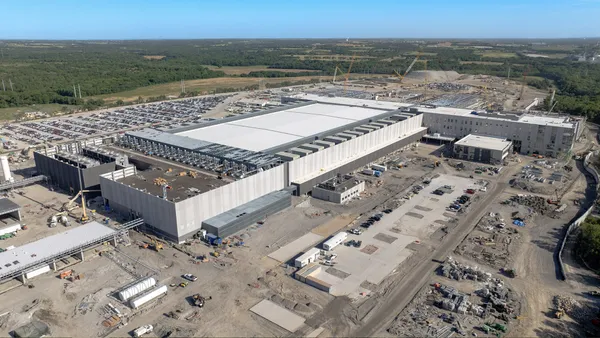Dive Brief:
- A 2018 Occupational Safety and Health Administration memorandum obtained by Bloomberg through the Freedom of Information Act, which authorizes its investigators to use camera-equipped drones to assist in the gathering of evidence during inspections in certain workplace environments, has raised several legal issues for contractors, according to an article by Fisher Phillips attorneys Todd Logsdon and Chantell Foley that was published in Lexology.
- A primary concern is privacy and how drone use could affect the right of employers to protest an inspection that goes beyond the original scope and to object to the taking of photos and video recordings. Another potential issue has arisen for those contractors working on multi-employer construction sites. OSHA requires that agency inspectors obtain employer permission before using a drone, but there is ambiguity around how one employer’s authorization could affect the rights of other companies on the jobsite, an issue complicated further by questions involving ownership of the airspace above the project.
- Logsdon and Foley suggest contractors take a three-pronged approach to OSHA drone inspections: develop a strategy on how to handle an inspection and designate someone to accompany the OSHA drone crew; participate in drone flight planning with the OSHA team and don’t be afraid to limit the inspection; and educate employees on the company’s rights. At of the end of November, according to Bloomberg Environment, OSHA has used drones during nine inspections.
Dive Insight:
"We don’t have a position yet since this is relatively new and small scale,” Brian Turmail, vice president of public affairs and strategic initiatives for the Associated General Contractors of America, told Construction Dive. "Our understanding is OSHA currently has two drones in operation. That being said, we are keeping a close eye on this and want to make sure that the technology is implemented in a way that ensures full accuracy."
Drones are not just the territory of large construction companies any longer. The development of better defined Federal Aviation Administration drone pilot and use requirements, increased affordability and more integrative capabilities have put these tools on the radar of smaller contractors as well. However, the FAA could be preventing further expansion of their use by falling behind on the issuance of airborne identification, or “electronic license plate," rules.
This delay will likely affect other anticipated rule changes involving issues like overhead flights and operations out of the pilot’s line of sight. It could be 2022 until the FAA comes out with its airborne identification regulations.
Nevertheless, drones are included in the list of advanced technology that 74% of construction companies said they will adopt in the next three years, according to USG Corp. and the U.S. Chamber of Commerce’s fourth-quarter Commercial Construction Index survey. Around 34% of respondents to that survey said they are already conducting drone flights over their job sites.
Construction industry groups, always tasked with protecting the interests of their members, haven't had time yet to develop strategies on advising contractors on how to deal with the possibility that an OSHA inspector will show up with a drone.













